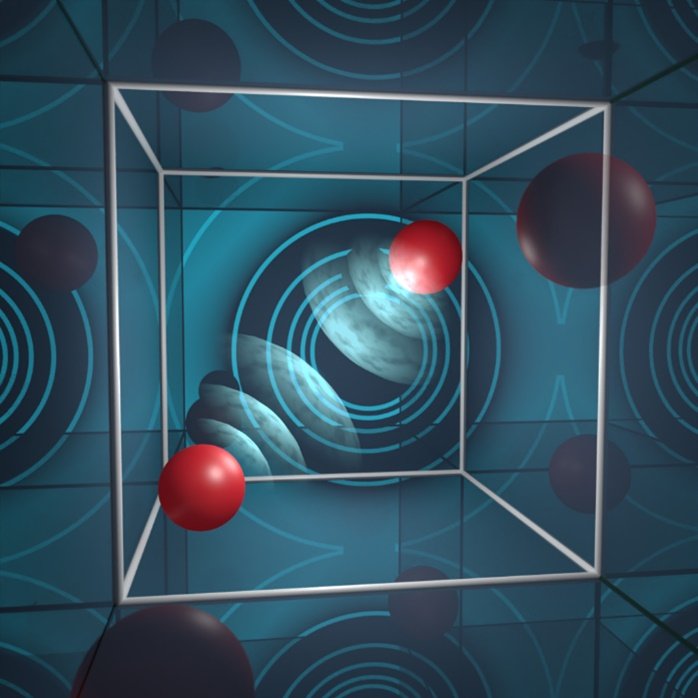The Science
The Impact
This work solves a long-standing and fundamental problem for electrically charged systems in “periodic boxes” in finite-volume simulations. The study derives the mathematical equation that describes how the properties of electrically charged systems depend on the size of the simulation volume. This “volume dependence” makes it possible for physicists to learn the real-world physical properties of a system. This will aid in studies of how elements form in stars.
Summary
This work solves a long-standing and fundamental problem regarding charged systems in a finite-volume with periodic boundary conditions. It derives the expected volume dependence for the binding energies of nuclei with two or more protons. In an atomic nucleus, the “strong nuclear force” binds protons and neutrons together. However, accurate descriptions of a nucleus must also consider the electromagnetic repulsion between protons. This force is particularly strong at the lowest energies, where many important processes take place that create the elements that make up the world we know.
This study means that nuclear binding energies can now be more accurately predicted from lattice simulations that use finite-volume boxes and must be extrapolated to infinite box size. Among other implications, the study allows researchers to extract parameters that play an important role in low-energy astrophysical reactions where one nucleus is captured by another to produce a new element.
Funding
Two of the researchers were supported in part by the National Science Foundation. A third researcher was supported by the Department of Energy (DOE) and its Nuclear Computational Low-Energy Initiative (NUCLEI) SciDAC-5 project. This material is based upon work supported by the DOE Office of Science, Office of Nuclear Physics, under the FRIB Theory Alliance.


